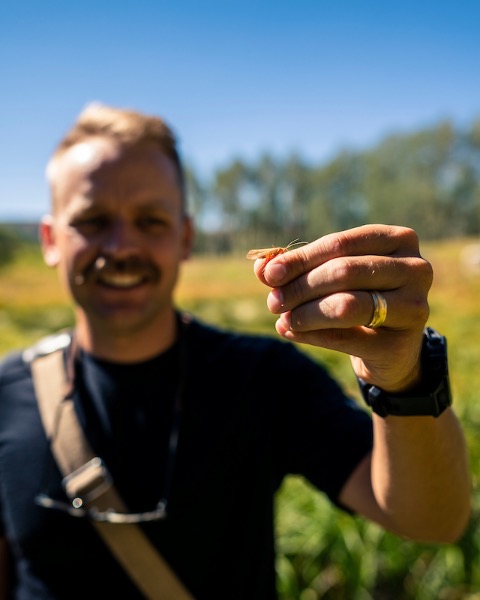Student 10-Minute Presentation
Systematics, Evolution, and Biodiversity
Student
Student Competition
Exploring the genetic basis of silk production: Comparative genomics of non-model arthropod silk genes

Amanda Markee (she/her/hers)
Graduate Student
American Museum of Natural History
New York, New York- RB
Richard Baker
American Museum of Natural History
New York, New York 
Paul Bryan Frandsen
Assistant Professor
Brigham Young University
Provo, Utah
Janice Edgerly-Rooks (she/her/hers)
Professor
Santa Clara University
Santa Clara, California- CH
Cheryl Hayashi
American Museum of Natural History
New York, New York
Presenting Author(s)
Co-Author(s)
The ability to produce silk has evolved convergently over millions of years across arthropod lineages, leading to a multitude of silk types, uses and displays. Despite the distance in phylogenetic relationships, there are striking similarities in structure and function of silk systems between insects and spiders– both morphologically, and genetically. All spiders, and approximately 23 lineages of insects produce silk, but very little is known comprehensively about the genetic variation of this important trait outside of model organisms. This is in part due to challenges with sequencing the genes (fibroins) responsible for diverse phenotypes of silk, due to their length ( > 25kb) and high repetition. Long read sequencing platforms have revolutionized silk research in the recent decade, providing the first opportunity to capture these repetitive domains, and analyze silk in a comparative context. Here, we characterize the allelic diversity of silk genes in a non-model insect (Order Embioptera: Oligotoma nigra) and spider (Order: Araneae: Argiope argentata) to assess genome quality, haplotype length, amino acid composition, and silk gene architecture. In this study, we provide insights into the genetic mechanisms and remarkable convergence in gene structure, and allelic variation in silk genes across arthropod orders.

.png)

